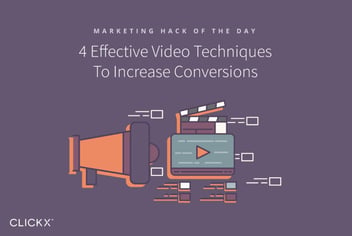4 Reasons Your Marketing Video Hasn’t Gone Viral
Using YouTube for marketing your ecommerce brand may seem counter intuitive at first. Yet, when you take a look at the numbers you’ll realize how much potential video has for your business.
Did you know that YouTube has more than 1 billion users? Every day people watch hundreds of millions of hours of video on YouTube, while generating billions of views. With so much traffic and potential for sharing, companies are beginning to see advantages in using YouTube to market their brands.
Videos Are Versatile
Videos are growing in popularity as informational tools. Consumers don’t want to read a big text block transparently trying to convince them to buy something; they do, however, want to watch a 30-second video of a dog making the product seem funny.
Anybody with an Internet connection can see a video, no matter where on Earth they are, making videos a unique opportunity to reach unlimited global audiences. If language barriers are a concern for a particular brand, a video can be styled to eliminate language entirely, focusing on images and nonverbal story. Alternatively, multiple languages can be featured in a video, immediately giving a brand or company a multicultural reputation.
Videos Are Repeatable
Equipment purchased to make one video can be used again and again (so long as you’re not doing crazy stunts with it). Depending on the video techniques used, a brand can set up a video for sequels, creating a series of any length that engages consumer interest and doesn’t break the bank.
When presented through video, a company can seem more human and real. The people, sights and attitude of a particular company of brand can come across instantly in a video, making them much more effective for branding than a text block on a website.
There is a right and a wrong way to approach marketing on YouTube. When you use video marketing, the goal is to make your video go viral. The first viral videos were created only to entertain and were accidental in how popular they became. Now that YouTube has been around for years, making a video go viral is no longer just hoping for the stars to align. Viral videos are a solid strategy to reach millions of customers with a minimal amount of work and financial investment compared to other marketing strategies.
[Tweet “Has Your Video Gone #Viral Yet? 4 Common Mistakes You Might Be Making”]
1. Lack Of Compelling Content
The number one problem causing marketing videos to stagnate at 10 views is they have no funny, interesting, beautiful, socially conscious, or insightful content. To go viral, a video can’t just be something you like—it has to be something anybody would like. Videos that get the most views and shares often feature as their topics one of just a few options: cute and/or majestic animals, social issues that aren’t overly controversial, or feats of unusual physical/mental prowess. Picking one of these angles is a good start to making your video go viral.
2. No Distribution Plan
Once you create your video, you just post it and sit back – right? In fact, this is almost guaranteed to fail. Viral videos rely on the snowball effect; that is, their popularity builds on itself until it’s being shared and viewed by everyone all over the Internet. But something has to get the ball rolling.
Creating a solid video with the right content is a great start, but without a distribution plan, it is much more likely than not to fail to go viral. While in the planning stages for your video, contact people and organizations relevant to the content. If your video features feats of athleticism, contact sports organizations. These organizations will be interested if your video has good content and will share it with relevant audiences. Coordinating a release time with these partners and incorporating a variety of social media sites into the release can go a long way to making a viral video.
3. Overly Salesy
The viral video you’re making is an advertisement. Its purpose is to generate traffic on your ecommerce site and to create revenue. However, a video overly focused on advertising will not go viral. With some ingenuity, this can be avoided. If the other content of the video is compelling enough, viewers will not think of it as an advertisement, even if the advertising content seems blatant. The soap and lotion company Dove has been very successful in this area. They recently created a video addressing the issue of women’s low self-esteem in a non-controversial way that received more than 4.5 million views. The video featured women describing themselves to a composite artist, and then featured different people describing them to the same artist. The difference in the sketches showed the women did not see themselves in the same positive light others saw them.
4. Poor Use Of Style
Production quality is a big part of what makes videos go viral. Poor production quality can easily cause a video to stagnate. However, production quality in itself is not enough for viral video success; and poor production quality isn’t a death sentence, if it’s used correctly.
“Shaky camera” style videos have been popular in Hollywood, with Cloverfield and Paranormal Activity being recent examples. Whatever production quality a video has, what it needs to go viral is the right style. The right artist or agency can make this happen. Any style of video at any production value can have viral success.
Conclusion
Viral videos represent an opportunity to establish and maintain a brand, by using creative and engaging content for their audience. The financial resources required to make a video go viral are minimal. They are also an important part of any marketing campaign. When used correctly, they can generate enormous traffic, leading to new customers and greater revenue. Avoid these common mistakes when making a video, and you’re well on your way to viral success.




